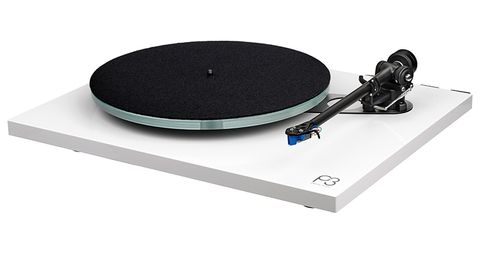Back in 1979, vinyl was the only serious music carrier this side of open reel tape, and the Linn Sondek LP12 was the only serious LP spinner, at least according to the UK hi-fi press. However, this viewpoint was not widely shared elsewhere, and in Japan, a fierce competition was raging between a number of the country’s consumer electronics behemoths to create the best disc spinner the world had ever seen…
The Lo-7D from Kenwood, the PX-100 from Onkyo, the TT-S8000 from Sony, the SP10 from Technics, and the DDX-1000 from Micro Seiki were just five of the competitors in the race. All were direct-drive, with the (at the time) cutting-edge quartz crystal referenced servo lock to maintain the platter spinning at seemingly infinitesimally low speeds. Massive main bearings gave vanishingly little rumble, and these decks all had a massive and massy foundation to absorb external vibrations with brute power.
The Marantz TT-1000 entered the fray. It was introduced at the Japanese Audio Fair in October of that year and sold for Y390,000 (£1,000 in the UK at the time, when the Linn LP12 was £350). It served as the center-piece of the company’s new ESOTEC series of ultra-high-end items, which competed with (at least in this nation) the Nakamichi Dragon line.
The TT-1000 was the epitome of Japanese turntable excellence. The attractiveness of the plinth was built on a massive 38mm thick laminate of two 15mm glass plates sandwiched by an 8mm aluminium alloy interlayer. Micro Seiki MSB-100 impact absorbing feet with an inventive air seal were used to absorb any vibrations that the 25.3kg machine couldn’t sink due to its sheer weight and size, and its 3.4kg balanced aluminium platter was topped off with a glass mat.
The power source for the turntable motor was housed in a large wood veneered cabinet next to the TT-1000. Touch controls on the turntable provided access to two speeds. The huge direct drive motor provided a quick start-up time of 1.5 seconds and excellent speed stability once the quartz lock was activated. The Micro Seiki CF-1 tonearm was included with early TT-1000L units, however Marantz soon sold the TT-1000 as a standalone unit, or as the TT-1000S with a SME Series III tonearm. The two-part arm bases, which were made of aluminium rather than bronze, were interchangeable with Micro Seiki turntables.
The TT-1000 was a resounding success in certain ways. It was an ergonomic triumph (proving exceedingly simple to use – no parallel tracking tonearms, vacuum platters, or disc stabilizers to mess with), and its looks were bang-up-to-date yet classically attractive, making the deck feel new and fresh over thirty years later.
However, it was less unmistakably successful acoustically. Its ‘master tape-like’ sound was robust, forceful, and reassuring. It didn’t have the rhythms and micro-dynamics of the LP12, but it had a wider, deeper, and more expansive sound with an effortlessness that no belt drive could match. The (reportedly Micro Seiki) motor had the torque of a JCB and gripped the deck’s thick platter like a limpet. Even yet, some listeners complained of a little ‘glassy’ tone, a minor upper mid harshness, which dragged the Marantz down in the neutrality criteria.
Despite having some well-known owners, the TT-1000 never really took off, and it was the less expensive Technics SP10 and SP15 that made their way into broadcast studios, while Onkyo and Nakamichi rivals found their way into the hands of ultra-high-end audiophiles. Even so, it lasted a long time, and it wasn’t replaced until 1990 with the Music Link TT-1000 Mk II, which cost roughly 12,000DM in Germany (the deck’s only recognized European market).
This, unsurprisingly, addressed the flaws of the original design, replacing the clangy glass platter top with a suede pad and closely mimicking Micro’s DDX-1500. It resulted in a much less brilliantly lid upper midband, and the TT-1000 finally received the international praise it deserved. Unfortunately, the nineties were the low point in the existence of the vinyl format, as it was dying as a mainstream music carrier while staying relatively unknown to audiophiles, DJs, and nostalgics. The deck sold only 150 copies in Europe, and proved to be one of hi-fi’s best kept secrets…
You’ll have to search far and wide these days to find either type of the TT-1000, and you’ll almost certainly have to hunt in Germany, Hong Kong, the United States, or Japan if you really want one. They’re also not cheap — the vendor is essentially free to choose his own price, or you may tell him how much you’re willing to spend. Even by today’s standards, the Marantz TT-1000 is one of the most traditionally simple, attractive, and well engineered turntables ever created — and it also sounds magnificent. It was the pinnacle of Marantz’s career, being one of the first and best.






